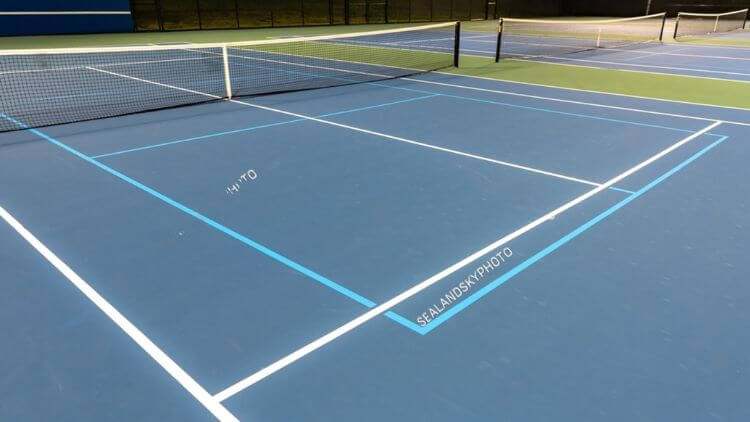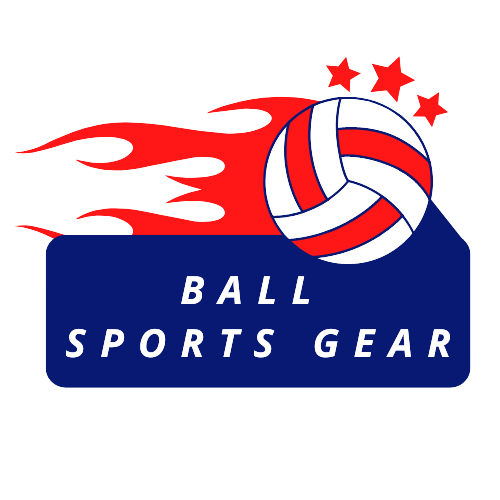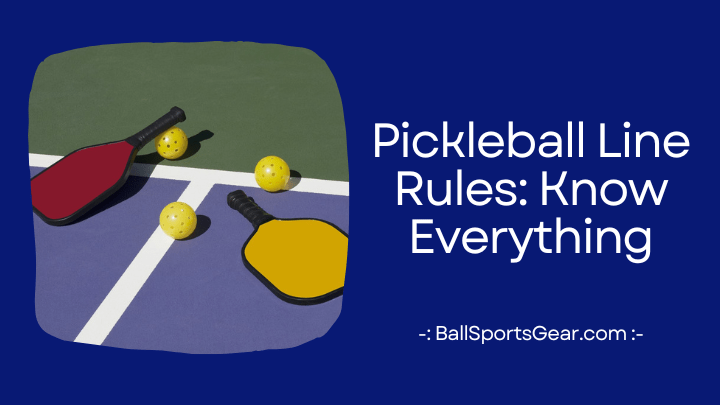Pickleball, a popular racket sport known for its fast-paced gameplay and friendly competition, has specific rules and regulations that govern the placement and dimensions of the court lines. Understanding these pickleball line rules is crucial for players to maintain fair play and ensure a consistent playing experience. In this article, we will explore the key guidelines for pickleball rules line calls, highlighting their importance in creating a level playing field for all participants.
Basic Call Line Rules
The Court Boundaries:
The first aspect to grasp in pickleball line rules is understanding the court boundaries. A standard pickleball court is rectangular and measures 20 feet wide by 44 feet long for doubles play. Singles play utilizes the same width but reduces the length to 20 feet. The court is divided into two equal halves by a centerline, and various lines demarcate specific areas, including the baseline, non-volley zone, and sidelines. Familiarize yourself with these boundaries to avoid stepping out of bounds and committing faults during the game.
The Baseline:
The baseline is the back boundary line of the court. When serving, players must stand behind this line and strike the ball into the diagonal service court on the opposing side. During rallies, the baseline acts as a reference point for determining whether a shot is in or out.
The Non-Volley Zone (NVZ):
The non-volley zone, also known as the kitchen, is a crucial area on the court. It extends 7 feet from the net on both sides and is marked by a line parallel to the net. Players are prohibited from volleying (hitting the ball out of the air before it bounces) within this zone. Violating this rule results in a fault, and the opposing team gains a point.
Hobbies:
The sidelines run parallel to the net and determine whether a shot lands in or out of bounds during a rally. If the ball touches the outer edge of the sideline, it is considered in. However, if it lands outside the sideline, it is deemed out, resulting in a point for the opposing team.
Calls and Faults:
Understanding the various calls and faults is essential for fair gameplay. Here are a few key ones to be aware of:
- a. Out of Bounds: If a shot lands outside the baseline or sideline, it is called out, and the opposing team earns a point.
- b. Foot Fault: When serving, if any part of the server’s foot touches or crosses the baseline or sideline before striking the ball, it is considered a foot fault and results in a fault.
- c. NVZ Violation: Stepping into the non-volley zone and volleying the ball leads to a fault.
- d. Faulty Serve: Serving into the net, out of bounds, or failing to hit the ball into the new pickleball line rules diagonal service court results in a fault.
Who Has the Right to Make Line Calls in Pickleball?
In pickleball, each player on the court has the right to make line calls for their respective side. This means that during a match, both the serving team and the receiving team have the authority to make pickleball rules line calls regarding balls that land on or near the lines.

Players are required to use their own judgement and viewpoint while making line calls. The player’s posture and vantage point from which they observe the ball’s trajectory can have a big influence on how accurately the line is called. Players should thus take care to position themselves so that they get the greatest possible view of the ball when it touches the court.
The decision-making process for line calls also heavily relies on player respect and communication. It is crucial for players to communicate openly and respectfully to address any disagreements or disputes over line calls.
It is frequently wisest to give the other player the benefit of the doubt when it comes to close or ambiguous line calls. Accordingly, it is advisable to pickleball rules line calls in favour of the opposition if there is a question as to whether the ball landed in or out. This strategy promotes fair play and excellent sportsmanship, guaranteeing that the game is performed with honour.
When to Make a Line Call In Pickleball?
Immediate Reaction: Players should make line calls promptly, ideally making the call as soon as the ball lands. Reacting immediately helps maintain the flow of the game and prevents disputes or confusion.
Clear View: It’s important to have a clear and unobstructed view of the ball’s landing spot. Position yourself in a way that offers the best perspective to accurately judge whether the ball landed within the lines or outside them.
Confidence in the Call: When making a line call, it’s essential to have confidence in your decision. Trust your judgment and make the call that you genuinely believe to be correct.
Honesty and Integrity: Maintain a high standard of sportsmanship by making line calls honestly and without bias. Avoid making calls based on personal gain or to manipulate the outcome of the game.
Uncertain Calls: In situations where the ball’s landing is unclear or uncertain, it is often best to give the benefit of the doubt to the opposing player. Choosing to play the point over instead of insisting on a questionable line call demonstrates fairness and good sportsmanship.
Communication: Effective communication between players is crucial in resolving line call disputes. If there is a disagreement, engage in respectful conversation to discuss the call and find a resolution without disrupting the flow of the game.
How to Make a Line Call In Pickleball?
Observe the Ball: Pay close attention to the trajectory and landing spot of the ball. Focus on its position relative to the boundary lines of the court.
Position Yourself: Move to a position that offers the best possible view of where the ball lands. Ideally, position yourself so that you have a clear line of sight along the lines in question.
Decisiveness: Make a prompt and confident call as soon as you determine whether the ball is in or out. Your call should be clear and audible to your opponent and any other players on the court.
Verbalize the Call: Use clear and concise terminology when making your line call. For example, if the ball is in, say “in” loudly and assertively. If the ball is out, say “out” with equal clarity.
Hand Signals (Optional): In addition to verbalizing your call, you can use hand signals to reinforce your decision. For an “in” call, you can point your index finger towards the court. For an “out” call, you can extend your arm and sweep your hand away from the court.
Trust Your Instincts: Trust your judgment and the perspective you have from your position on the court. Avoid second-guessing yourself unless there is a genuine doubt about the call.
Acceptance of Opponent’s Call: Respect your opponent’s line calls, even if you disagree with them. Remember that line calls can be subjective, and it’s part of the game to accept the calls made by your opponents.
Open Communication: If there is a disagreement or dispute over a line call, maintain open and respectful communication with your opponent. Discuss the situation calmly, focusing on finding a resolution rather than escalating tensions.
Admitting Mistakes: If you realize that you made an incorrect line call, admit your mistake and rectify it immediately. Good sportsmanship involves acknowledging errors and rectifying them promptly to ensure fair play.
Focus on Fairness: Always prioritize fairness and the spirit of the game when making line calls. Avoid making biased or unfair calls that could compromise the integrity of the match.
Solving Disputes over Pickleball Line Calls

Remain Calm: It is essential to stay calm and composed when a line call dispute occurs. Keeping emotions in check allows for clearer communication and a more rational approach to resolving the issue.
Open Communication: Engage in open and respectful communication with your opponent. Clearly express your perspective and listen attentively to their point of view. Creating a dialogue can help clarify misunderstandings and find a resolution.
Third-Party Opinion: If the dispute persists and both players are unable to reach an agreement, consider seeking the opinion of a third-party, such as a neutral player or a designated referee (if available). The third-party can provide an impartial assessment of the line call.
Spirit of Sportsmanship: Embrace the spirit of sportsmanship and fair play. It is important to prioritize the integrity of the game over personal preferences. Respect your opponent’s perspective and be willing to accept the final decision.
Rulebook Reference: Consult the official rulebook of pickleball to determine the specific guidelines regarding line calls. Understanding the rules can help clarify any uncertainties and guide the resolution process.
Compromise: In some cases, finding a middle ground or reaching a compromise may be the best solution. Consider options such as replaying the point or agreeing to continue the game without dwelling on the disputed call.
Learn from the Experience: Regardless of the outcome, use line call disputes as learning opportunities. Reflect on the situation and strive to improve your own line call accuracy and decision making in future matches.
Frequently Asked Questions
A: While the official pickleball court lines are typically white, some recreational facilities may use different colors to enhance visibility or for aesthetic purposes. However, the dimensions and positions of the lines must still adhere to the official standards.
A: If a shot lands on any part of the line, it is considered in play. If it lands outside the line, it is considered out, and the opposing team earns the point.
A: No, the lines should not be erased or modified during the game. They should be clearly marked and maintained to ensure fair play and consistency throughout the match.
Conclusion
In conclusion, the rules governing pickleball court lines are essential for maintaining fairness and consistency in the game. The precise placement and dimensions of these lines ensure that players have clear boundaries and can make accurate judgments during gameplay. By adhering to these guidelines, players can engage in competitive matches with confidence, knowing that the court lines serve as a reliable framework for fair play. Whether you are a beginner or an experienced pickleball player, understanding and respecting the pickleball line rules is essential for enjoying the sport to its fullest potential.

